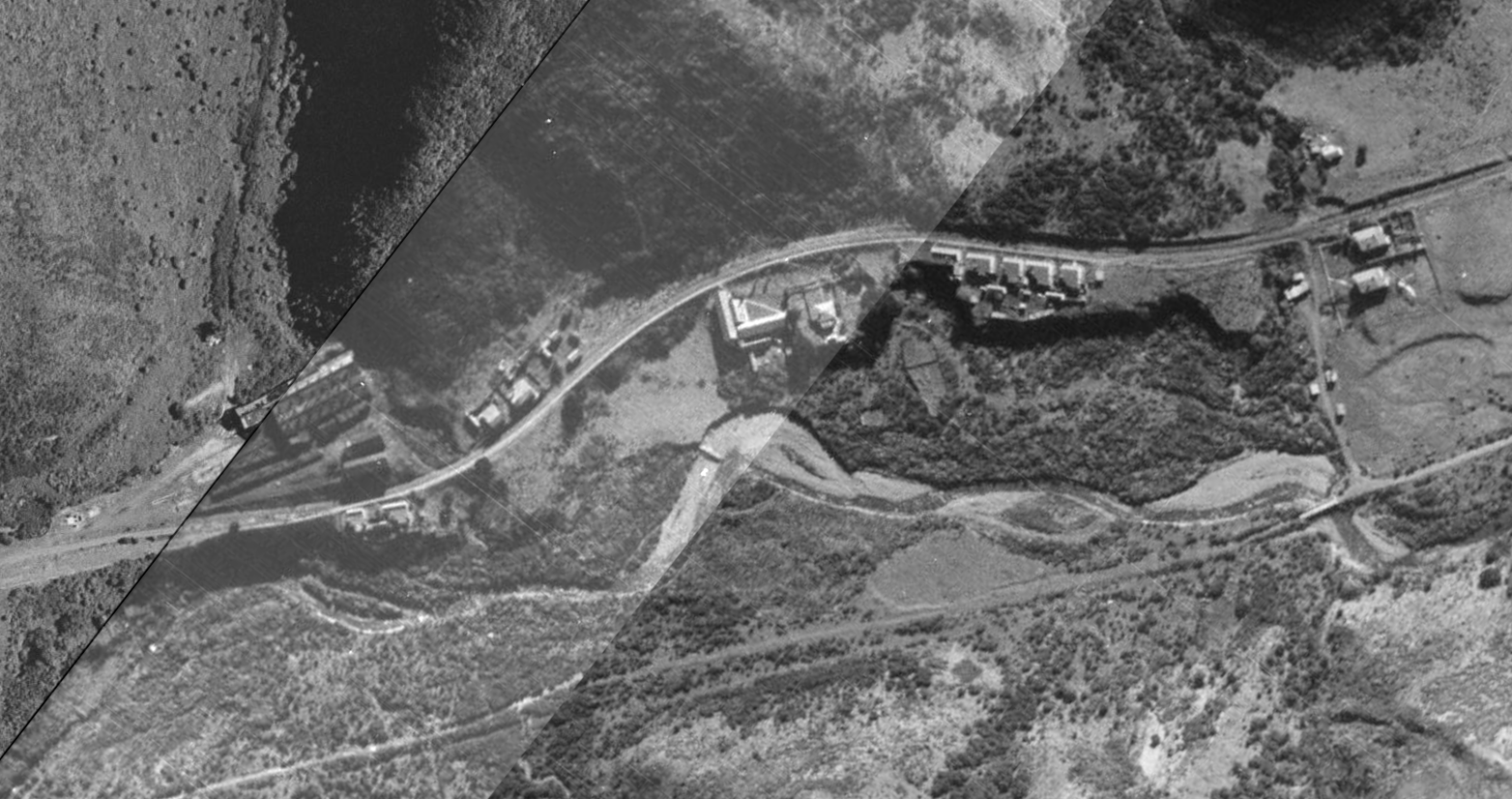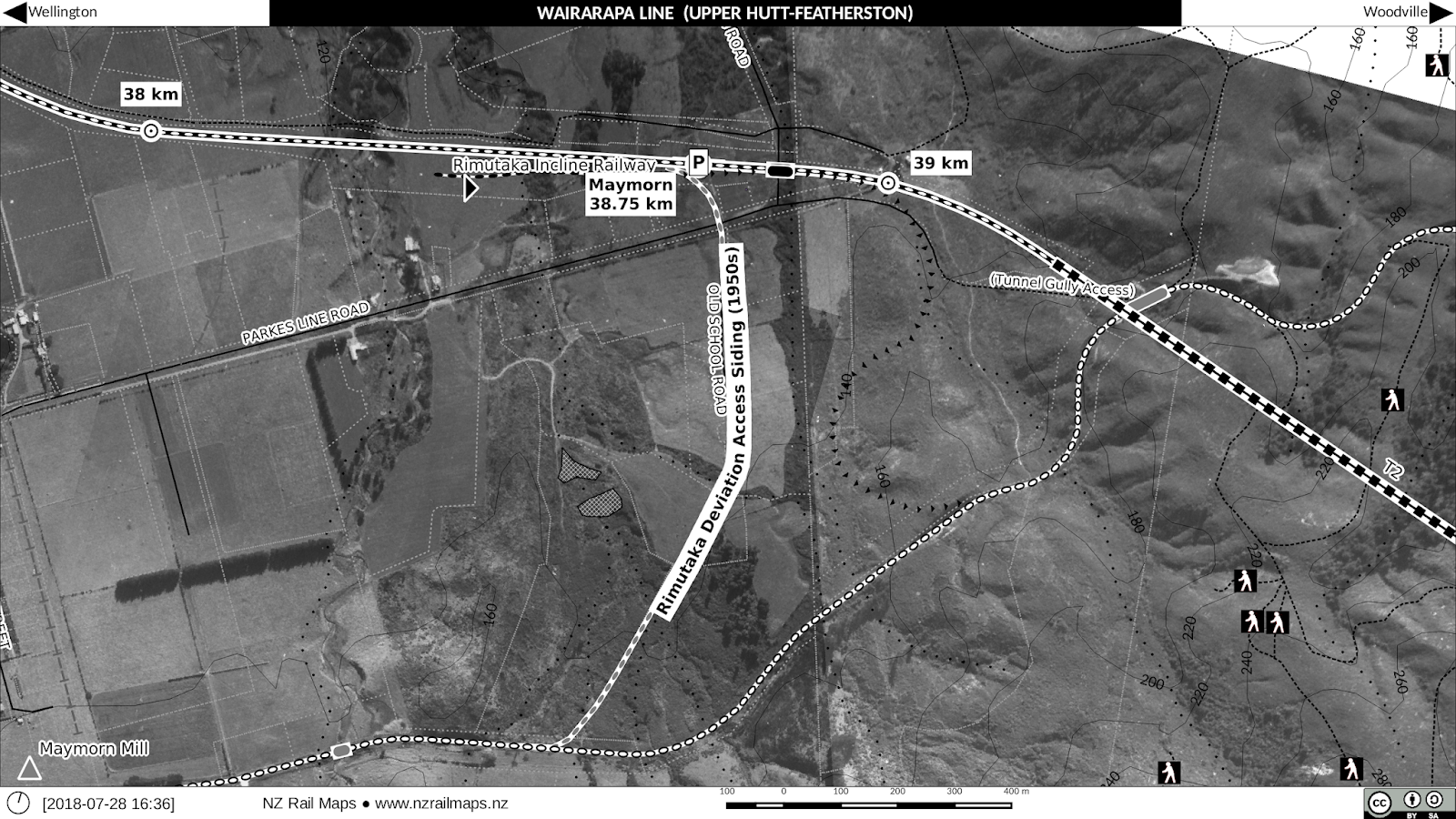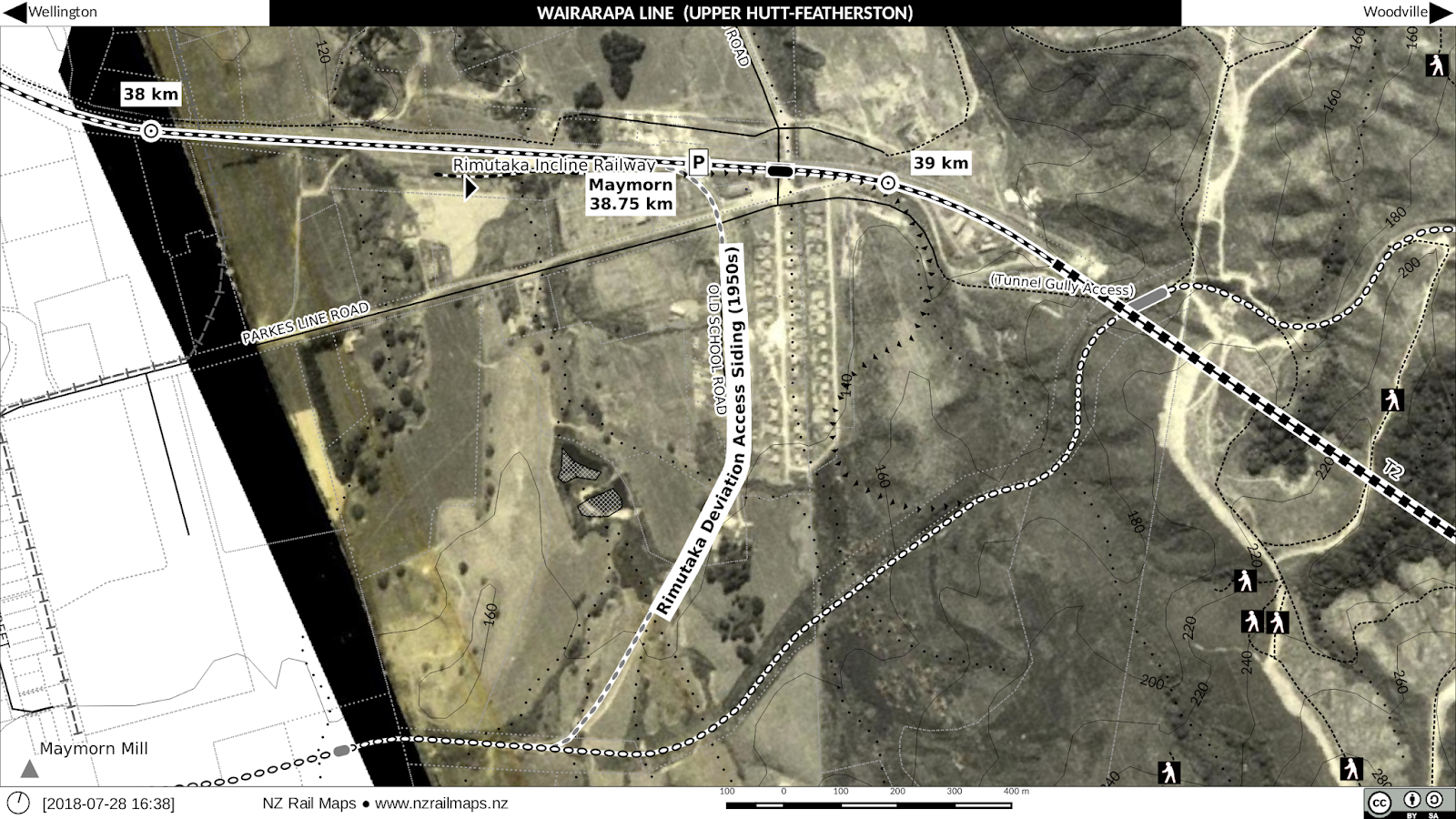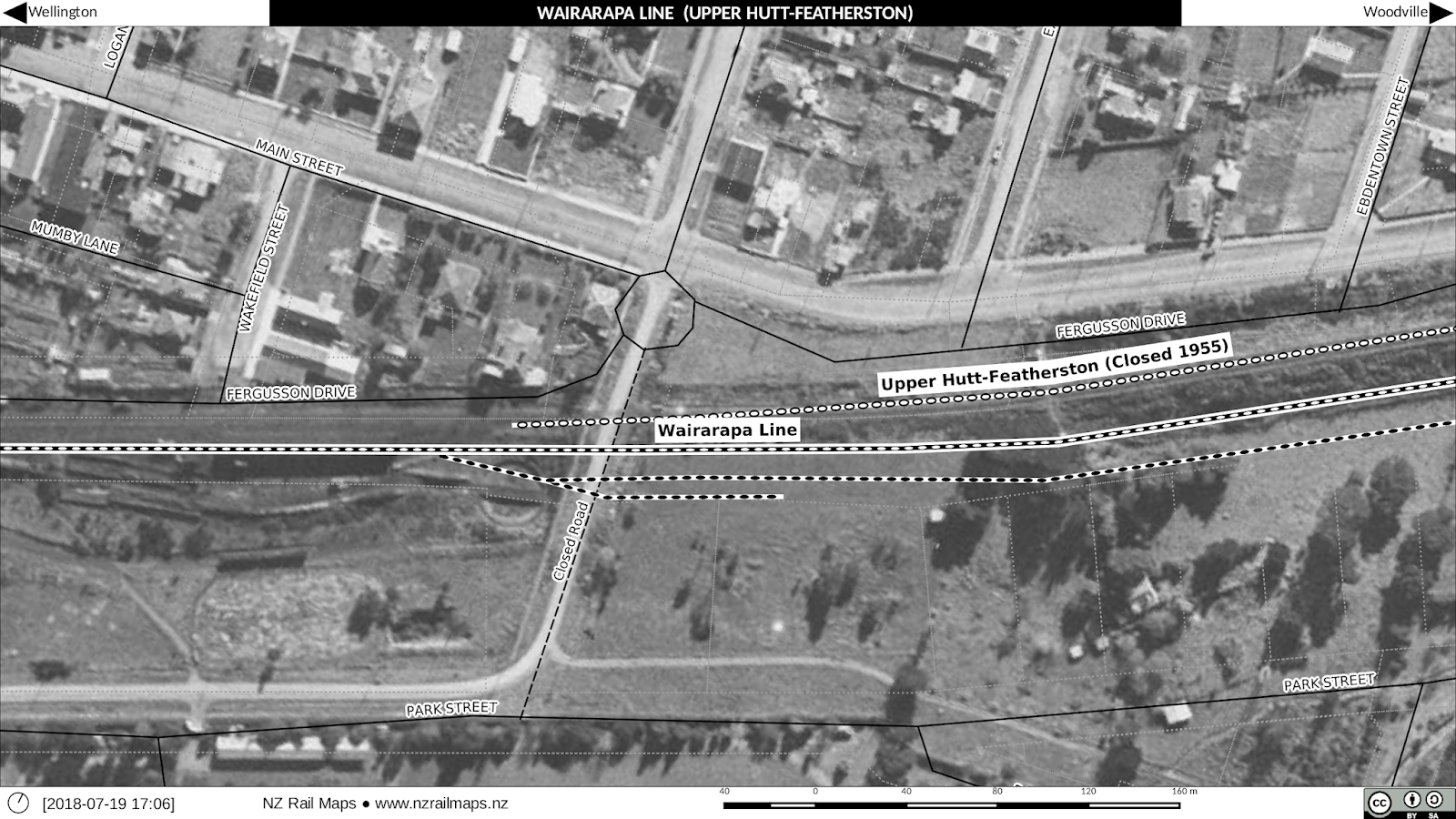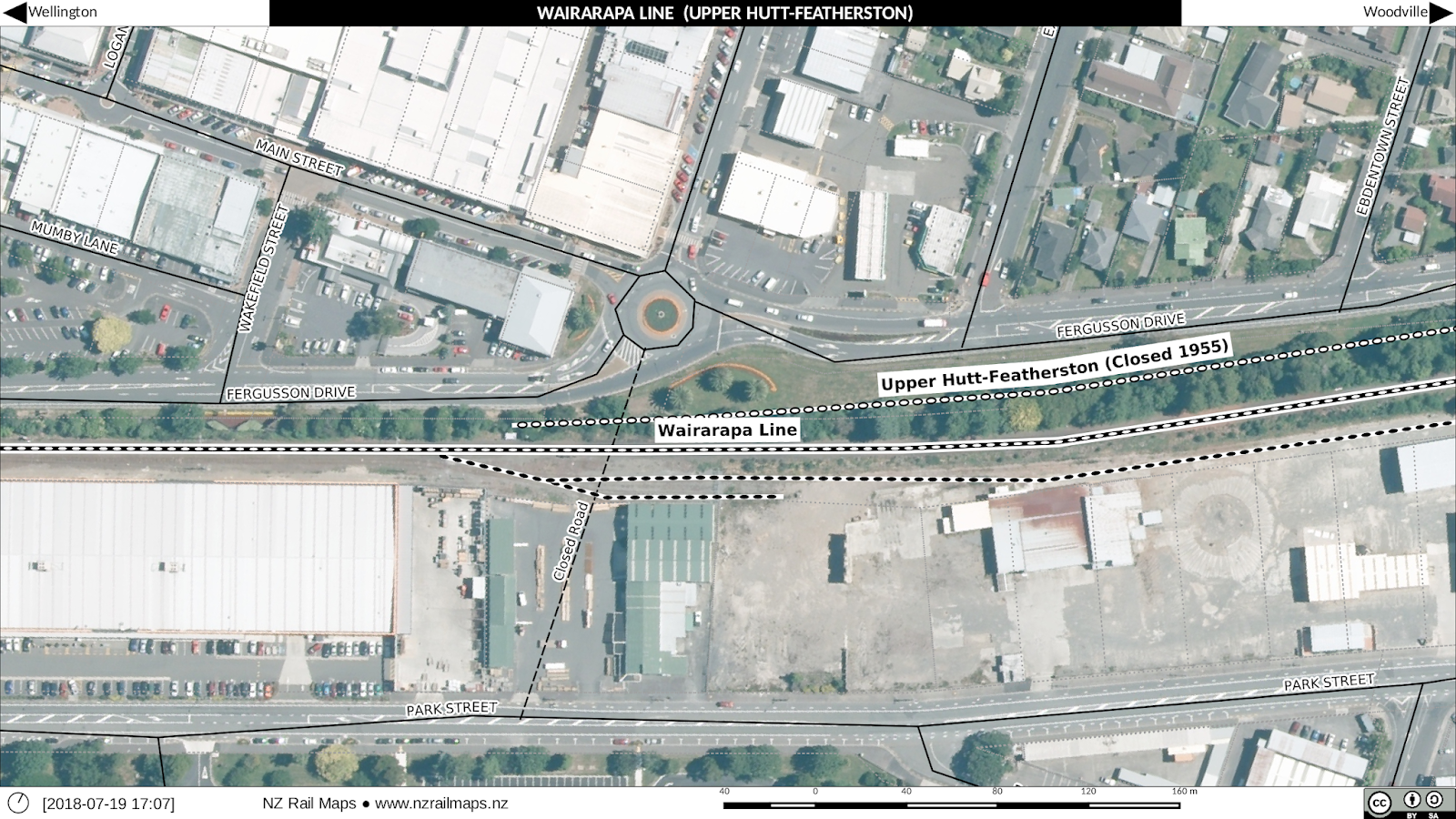This post contains a large number of maps because there are also some from 1951 and 1958, which are the periods immediately before and after the opening of the Rimutaka Tunnel deviation.
Using the WTT data I have obtained the mileages that should be the correct ones for Mangaroa through to Pigeon Bush. It is interesting to note that the actual distances would have changed not long before the deviation opened because the old Hutt valley line up the western side (now cut back to Melling) was bypassed itself at the beginning of 1954. This resulted in distances from Hutt Valley Junction to Haywards increasing slightly because the new route was longer, although the opening of the Silverstream deviation just four months before Rimutaka would have reduced distances somewhat. The 1947 WTT shows Upper Hutt being at 19 miles 37 chains from Wellington. However in 1971 the distance was recorded in the Way and Works district boundary diagrams that I have as being 20 miles 19 chains, which would account for the increase.
I stuck with the earlier measurement as it seems unlikely the railway north of Upper Hutt would have been remeasured for such a short period of time before it closed. It does seem however the entire section from Haywards to Upper Hutt was remeasured if this new distance was obtained. Certainly it would have been necessary to put in new distances for the stations on the Hutt Valley line, and for the Rimutaka Deviation, so it seems that may be how the new distances came to be obtained up to Upper Hutt. However even in 1971 when the Way and Works chart was prepared, the junction point entailed a gain of around nine miles given how much shorter the Rimutaka Deviation was, and so the mileposts from there north were not altered, making Featherston on paper 24 miles from Upper Hutt instead of the 15 miles it actually was once the deviation had opened.
My position on station distances has and remains to record the last official distance stated for a particular station. In many cases this does not line up with kilometre posts of today because of remeasurement from scratch being the means to obtain the distances at metrication. This is why I keep the mileages in miles instead of converting them to kilometres because they give a misleading relationship to the present day metric measurements.
One of the most interesting things about the "Rimutaka Railway" (the title used in an NZRLS book I have) is that it was a 19th century railway that survived past the middle of the 20th. There were absolutely no improvements done anywhere except for a curve easement at Summit. Hence it was still being worked right to the end with the steep 1 in 35 grades and the sharp and numerous curves down to 100 metre radius.


Overview of Mangaroa Station. The original route mileage when opened was "22.08" (I assume 22 miles 8 chains). However Upper Hutt was then at 19 miles 53 chains, which distance had been reduced by 1954.
The most notable features in this section being the old WW1 army camp site near a sawmill (the logging tramway ran along behind the houses in the subdivision) and a small bridge.
These four maps cover the same area in respectively 1943, 2012, 1958 and 1951. Notable is the present day railway, and the tunnel construction camp in the last two photos.
Four maps following the same chronology, of the Rimutaka Tunnel development camp area.
Again with four maps for 1943, 2012, 1958 and 1951, we have the old railway climbing into the hills above the Rimutaka Tunnel. Grades in this section up to Kaitoke maxed at 1 in 40.
A pair of Tunnel 2s. The Rimutaka tunnel and the Mangaroa tunnel are both No.2 on their respective sections of the Wairarapa Line and coincidentally almost parallel. There was a bridge almost above the entrance of the Rimutaka Tunnel and the site of another can be seen on a 90 degree curve due east of the Mangaroa tunnel.
Two small bridges were crossed by the railway in this section. The second bridge near a horseshoe curve may still have the abutments in use today by a footbridge although this bridge is not actually on the cycleway because of its conversion into a road. There are a couple of route changes which have bypassed cuttings on the rail corridor.
Overview of Kaitoke Station. This was a bit unusual because the goods yard was separated from the rest of the station site. The site of the main station is private property but the goods yard area is publicly accessible although there are no remains of any note today.
The main station complex. Some of the buildings including the station itself remained in place for perhaps as much as 50 years after closure but are now gone.
Goods yard site. One assumes this was cleared soon after closure with no significant traces left.


